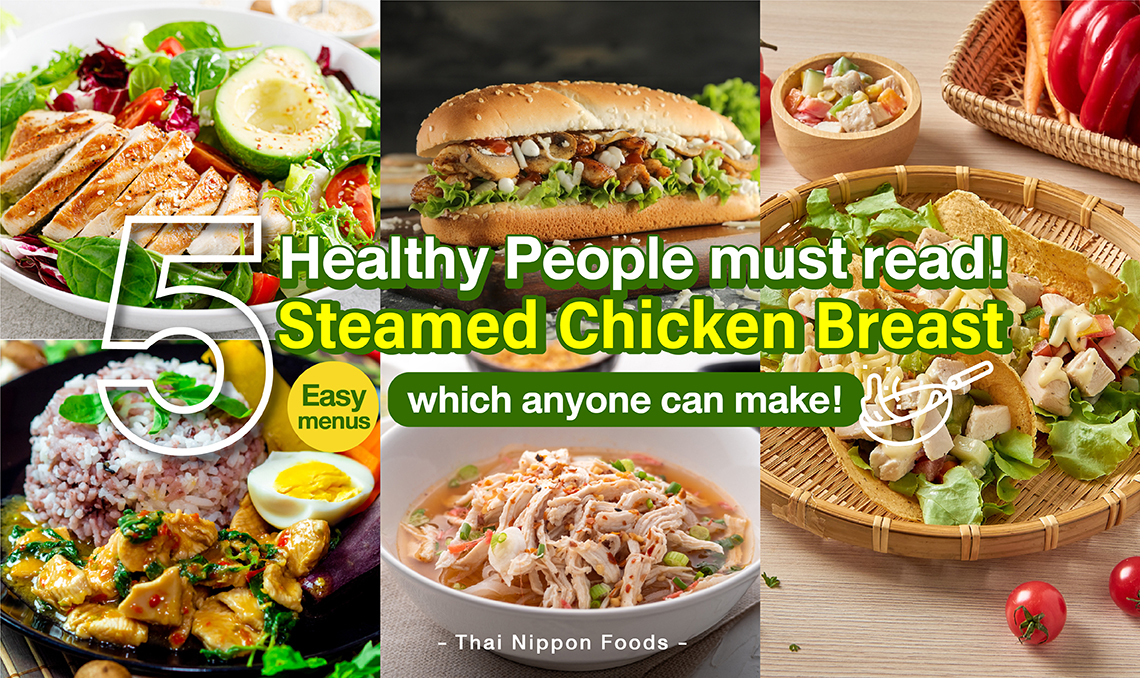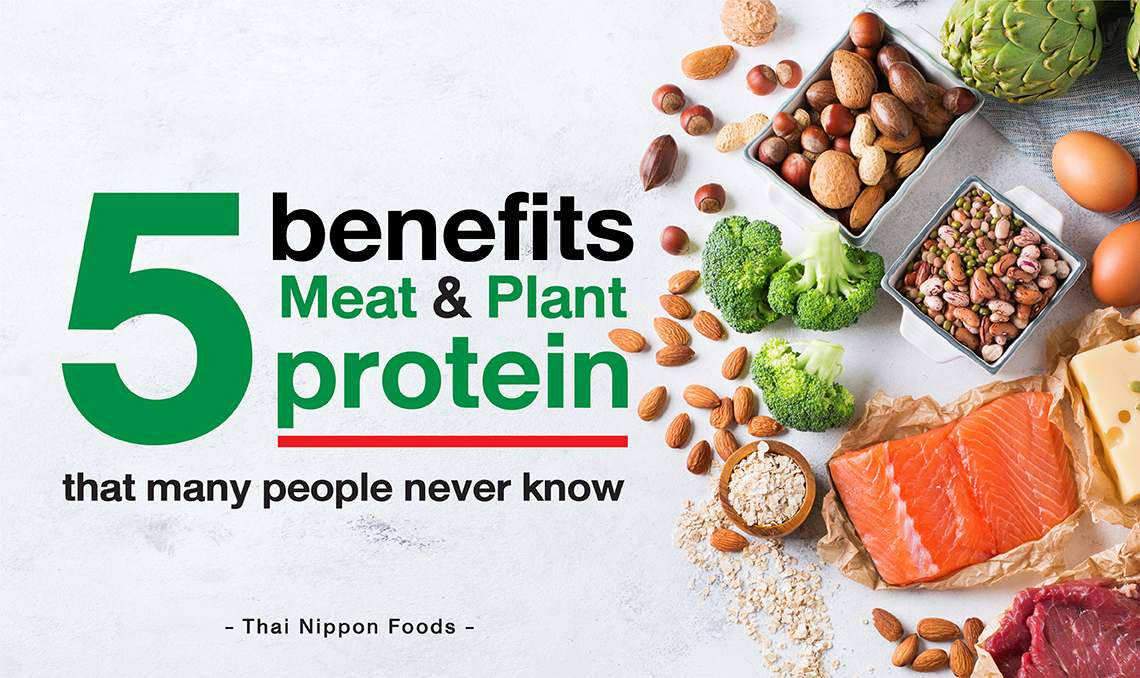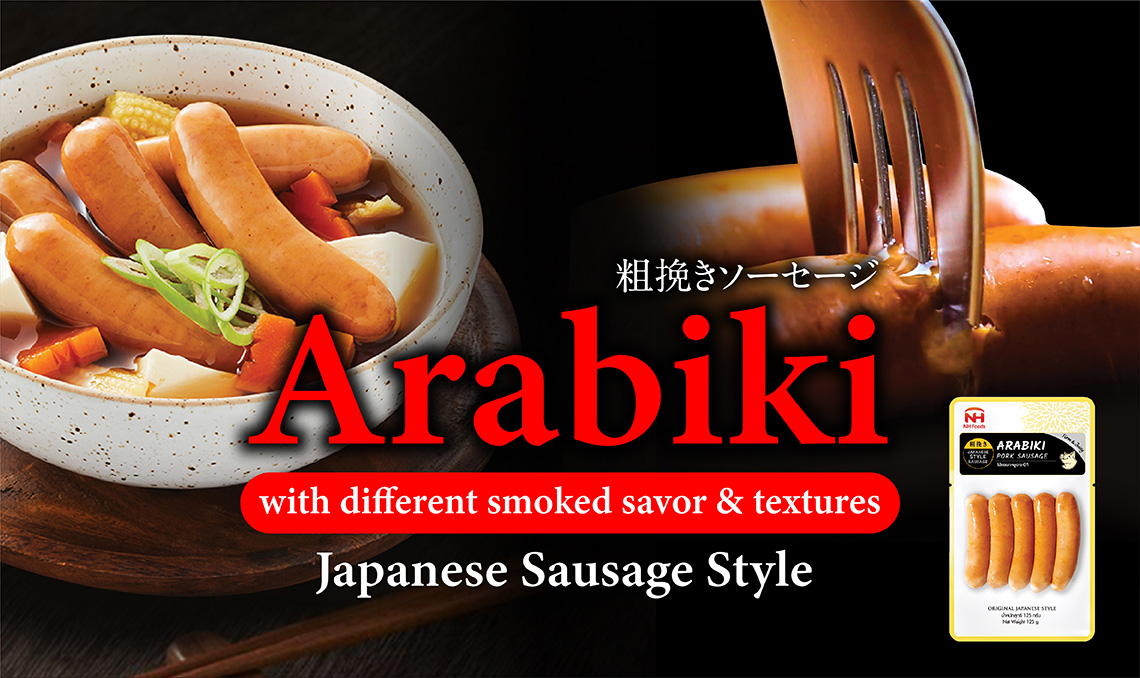Tips for taking care of children with food allergies to prevent unwanted allergic reactions
Key Takeaways
- Tips for taking care of children with food allergies include parents checking food labels every time, paying attention to cleaning dishes, being careful with shared kitchen appliances, separating colored cups and bowls, teaching children to be cautious when eating outside the home, and informing relatives of details when the child needs to be cared for, in order to prevent unwanted allergic reactions.
- Parents can easily observe symptoms in children with food allergies, as follows: Acute symptoms usually begin within 2-4 hours and often include hives, swollen lips, and swollen eyes. Severe cases may result in wheezing, low blood pressure, and seizures. Delayed symptoms may include red, dry, itchy skin rashes or vomiting, severe diarrhea, or bloody stool.
Many parents, when they find out that their child has a food allergy, not only need to observe their child’s allergy symptoms closely, but also need to pay special attention to their child’s diet to avoid unwanted illnesses. Today, we have collected tips for parents to take care of children with food allergies, to provide guidance for parents to better care for their children.
Table of Contents
Food allergies in children

If your child has unexplained redness on their skin, it may be a sign that your child has a food allergy. This is something that requires close attention and care, as children cannot take care of their own food intake like adults can. Adults with food allergies know how to avoid those foods, but for children with food allergies, parents must be vigilant to prevent unwanted allergic reactions.
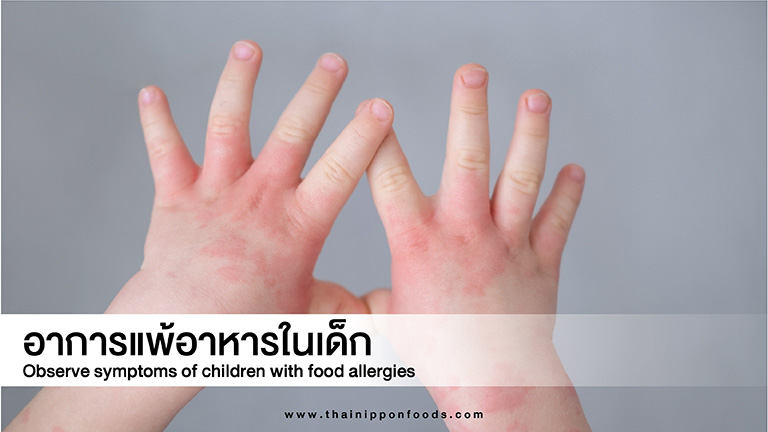
Parents can easily observe symptoms of children with food allergies, such as:
- Sudden onset symptoms typically occur within 2-4 hours after eating the allergenic food and usually involve skin reactions, such as hives, swelling of the lips or eyes. Severe reactions may include difficulty breathing, low blood pressure, and even seizures.
- Delayed onset symptoms may take several hours or even days to appear and typically involve skin reactions, such as redness, dryness, and itching. In children, these reactions often occur on the cheeks or in the folds of the skin. If the allergy affects the gastrointestinal tract, symptoms may include vomiting, severe diarrhea, or bloody stool.
Examples of foods that many children are allergic to include
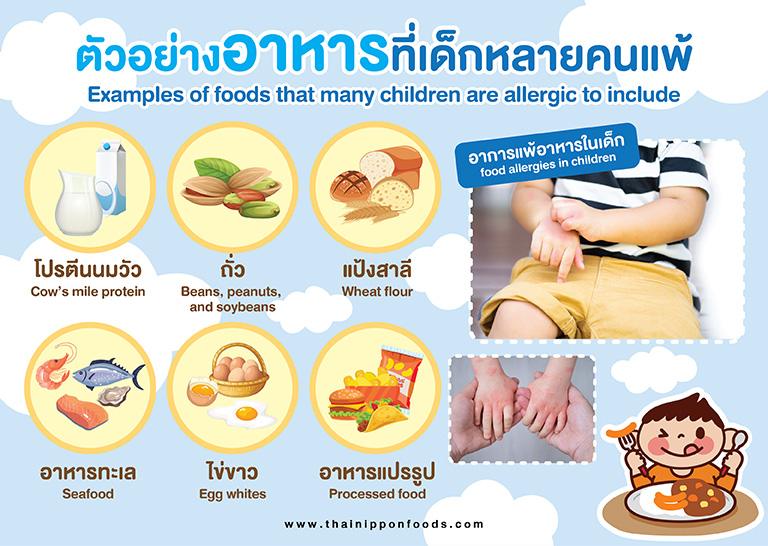
Each type of food has different effects and severity of symptoms. In some cases, individuals may have a history of allergies since childhood, but after avoiding certain foods for a long time, some may disappear when they grow up. Some examples of foods that many children are allergic to include:
- Cow’s milk protein Consuming cow’s milk protein or lactose during pregnancy or in infant formula may increase the risk of protein or lactose intolerance in infants under 4 months old.
- Beans, peanuts, and soybeans are another common cause of allergies, especially in children in the western region.
- Wheat flour, which can be found in cereals, bread, and pasta like spaghetti or macaroni, can be a common allergen for infants, especially when found in cereals or baked goods.
- Seafood, such as shrimp, clams, crab, and fish, can trigger allergic reactions more than freshwater fish like catfish and tilapia.
- Egg whites contain proteins that can trigger allergies, so parents should avoid giving egg whites to young children in the early stages and start introducing them after 6 months of age to reduce the risk of allergies.
- Processed food products with a variety of ingredients may increase the risk of allergies in young children. Therefore, parents should choose reliable products that meet standards and have clear labeling of ingredients that may cause allergies.
The main causes of food allergies in children
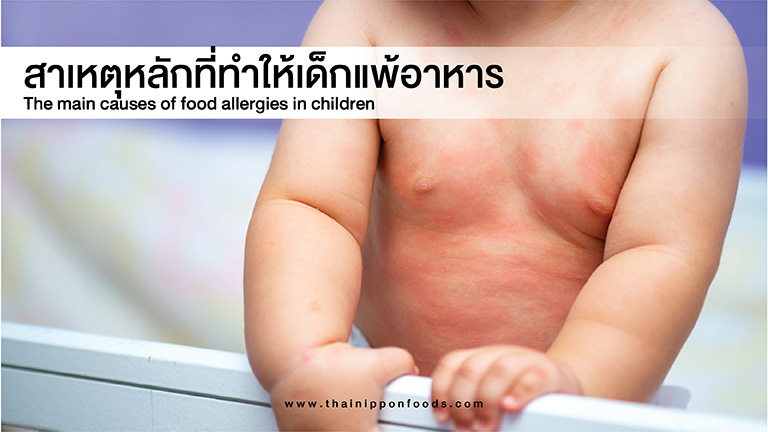
Families with a history of allergies make it difficult to avoid, as if the parents have a history of food allergies or allergies before, their children are also at higher risk.
- Not breastfeeding baby, especially in newborns or during the first month of age, can increase the risk of developing food allergies more easily than other children.
- The mother consuming the same type of food repeatedly or not avoiding foods that can cause allergies can also trigger the development of allergies in the child. During pregnancy or breastfeeding, the mother can also expose the child to these allergens.
- Incomplete digestive system, specially in young children, may cause the immune system to react to food that enters the bloodstream, leading to an allergic reaction.
- The body lacking vitamin D because vitamin D s a component that helps stimulate the immune system in the body, so children who lack vitamin D are at risk of developing food allergies.
Tips for taking care of a child with a food allergy
1. Check the food label every time
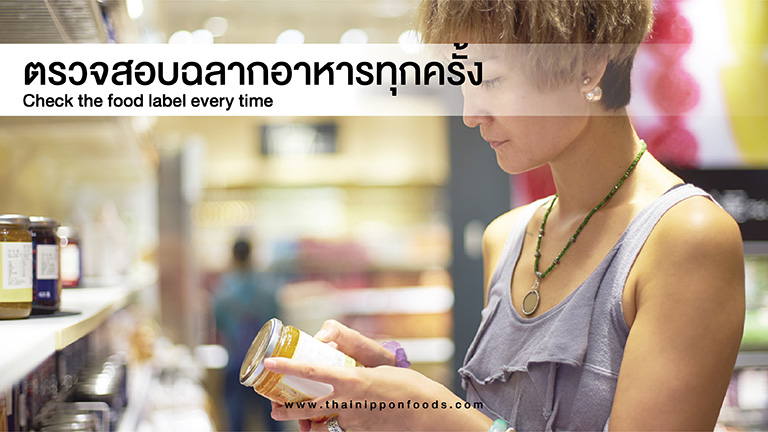
Whether it’s snacks or packaged foods, before giving them to your child, parents should check the food label on the back first to avoid unwanted allergic reactions caused by ingredients. The external appearance cannot indicate all of the ingredients inside. However, the label on the back often indicates ingredients that are potentially allergenic, such as wheat flour, milk, and soybeans. This is to increase safety for consumers.
2. Wash the utensils clean
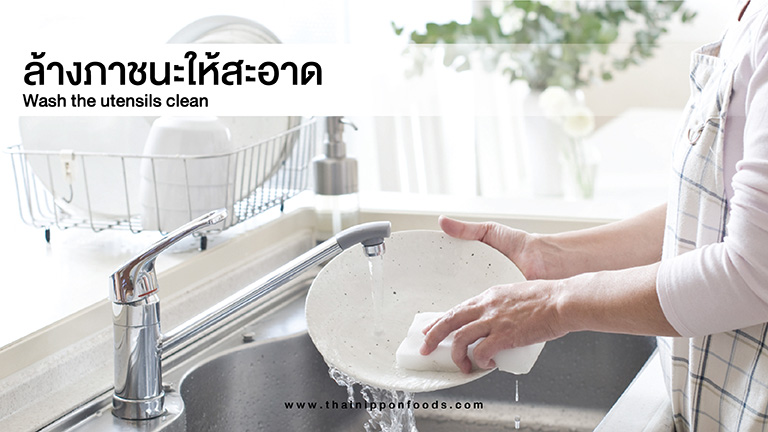
This is another important tip that should not be overlooked as it can trigger food allergies in young children. If parents do not pay enough attention to this step, it can lead to health issues. Parents should take their child’s used utensils and spoons and soak them in soapy water before washing them thoroughly with clean water bubbles. Especially for households that use dishwashers as the primary method, the utensils should be soaked in soapy water before being loaded into the dishwasher to remove potential allergens. Moreover, it is important for parents to use separate dishwashing bubbles for their food allergic child and to change them regularly for good hygiene.
3. Be careful when using kitchen appliances together
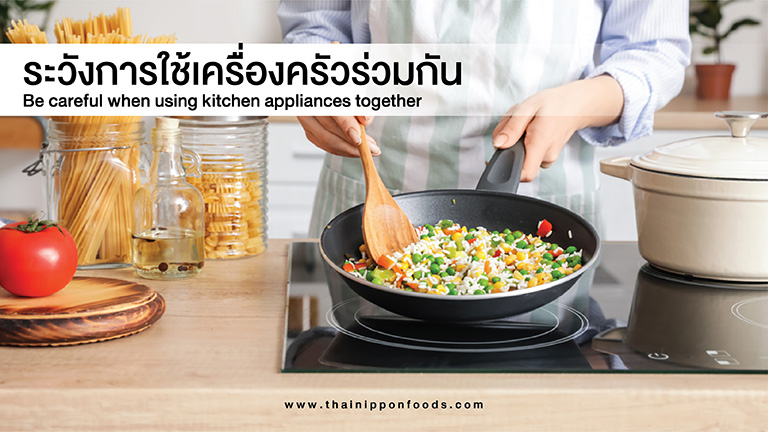
The process of cooking is also an important matter that parents should pay attention to in order to avoid cross-contamination of allergens in each meal. Therefore, parents should cook food for allergic children separately from other children by using separate pots, pans, and utensils, or they can cook the allergic child’s food first and then add the allergen-containing ingredients afterward, such as eggs or peanuts.
4. Separate the cups and bowls by color
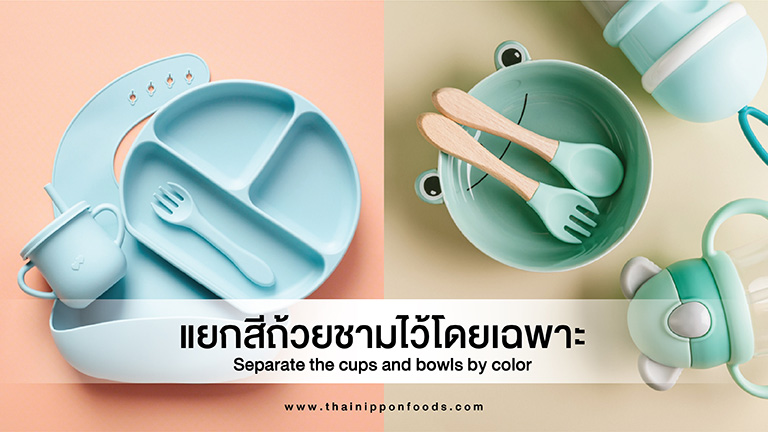
A house with many members may encounter confusion during food preparation. Therefore, it is advisable to separate the color of the cups and utensils of children with food allergies to prevent parents from confusion when preparing food. Alternatively, specific seating arrangements for children with food allergies can be designated and their food prepared first to avoid any unwanted allergic reactions.
5. Teach to be cautious when eating out
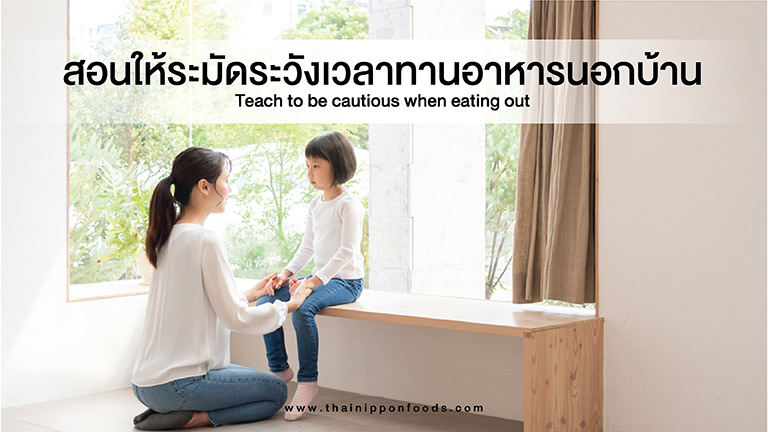
Certainly, parents are not with their children all day long because children have to go to school, sometimes have to go on field trips outside of school, or sometimes our children may be invited to a birthday party at a friend’s house, which makes it impossible for us to take care of them 24 hours a day. Therefore, parents should teach their children to be cautious when eating food outside the home by informing them of what they cannot eat, and may even create a small note about the list of foods they are allergic to, so that young children can carry it with them as a helpful tip.
6. Notify relatives in detail when they need to take care of someone
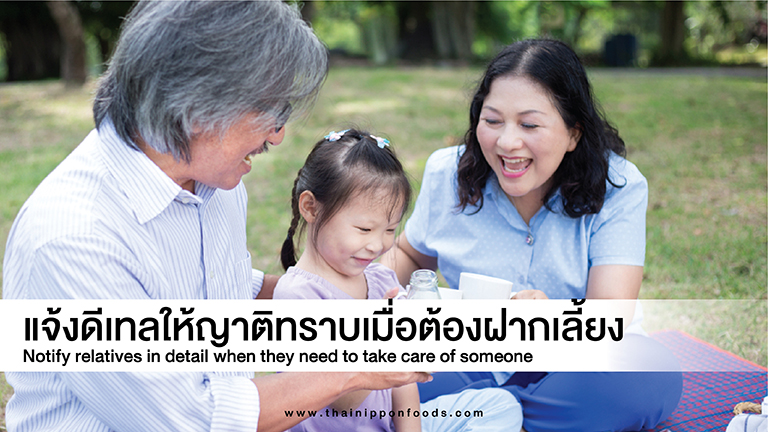
On some days, parents may have important tasks to do that require them to be away from their children for a day or more. Therefore, it is necessary to have someone else, such as a close neighbor or relative, to help take care of the children. It is important to inform these people of the details of the food that the child is allergic to, such as eggs, milk, and wheat flour, etc. This information can be sent through messaging apps or written on a notepad to create understanding and prevent unwanted allergic reactions. This is a helpful tip to avoid unwanted allergic reactions.
All of these are tips for taking care of food-allergic children that help prevent unwanted allergic reactions. Parents can apply these tips to take care of their children. Parents should be vigilant in observing their child’s symptoms after eating, in order to prevent severe allergic reactions. If parents are concerned about whether their child may be allergic to additional foods, they can take their child to a doctor for a physical examination and additional advice from a specialist to confirm the type of food allergy and the severity of the allergic reaction. This is an important step in helping our children avoid unwanted allergic reactions.
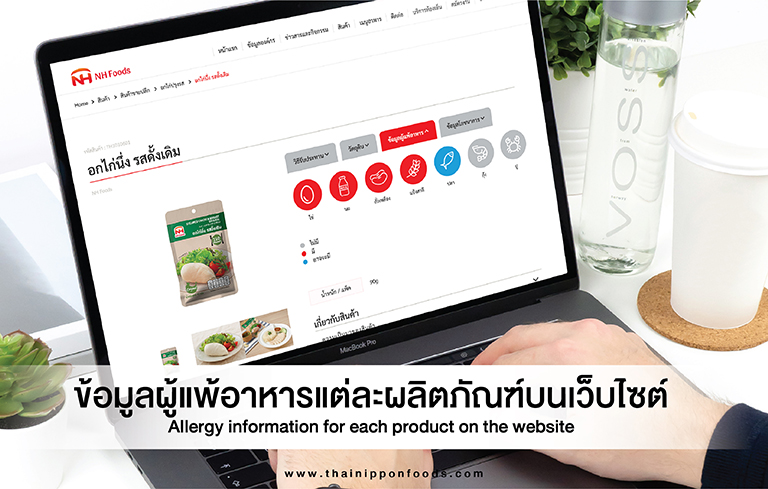
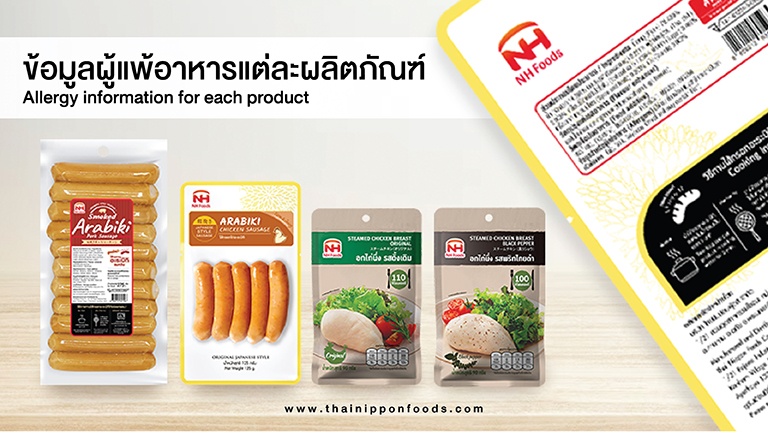
In addition to taking the child to see a doctor, taking care of a child with food allergies is equally important. This requires carefulness and attention when selecting and purchasing high-quality products that meet standards and clearly label their ingredients. NH Foods products not only have labels that indicate their ingredients, but also provide detailed information about the product, including information for people with food allergies, how to consume, and the ingredients, which can be found directly on the website.
More information & Promotion campaign at
Facebook : https://www.facebook.com/nhfoodsthailand
Website : https://thainipponfoods.com/
Instragram : @thainipponfoods
LINE OA : @thainipponfoods
Youtube : https://www.youtube.com/channel/UCFcXtn8BSj60qPPh9R1xLgQ



